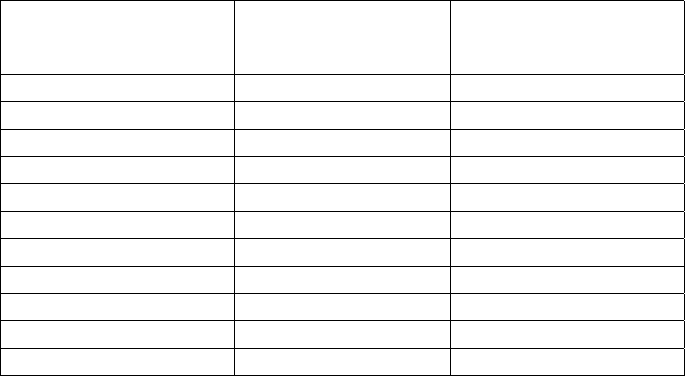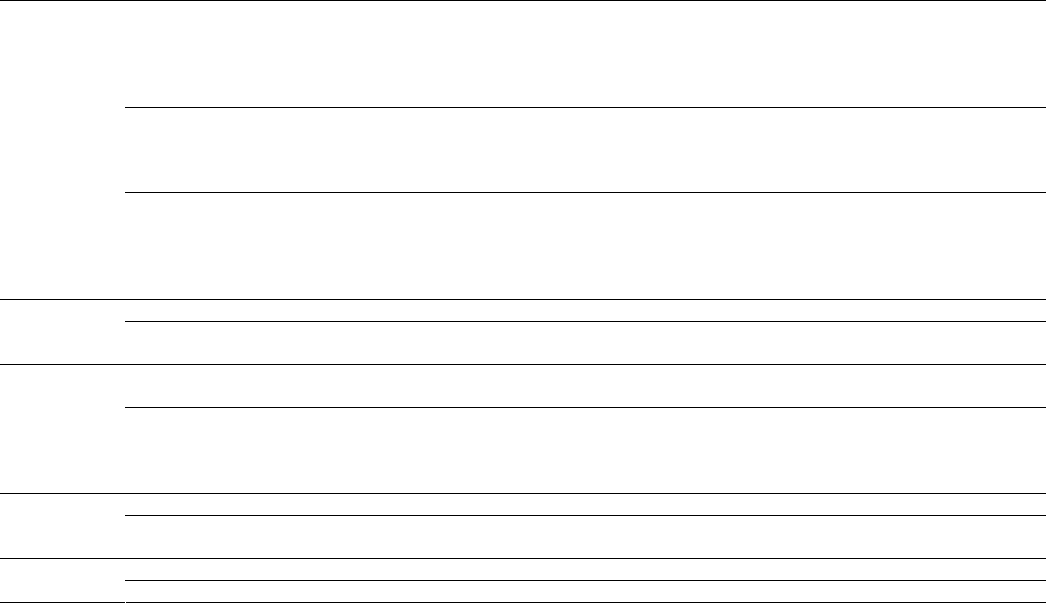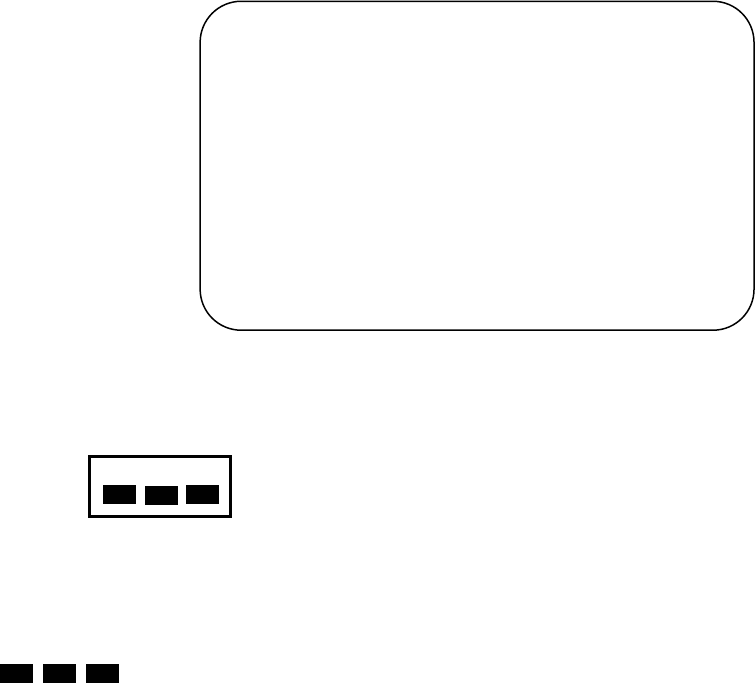Dynabook UPA3299WLP 802.11 b/g Mini-PCI Module in Tablet PC User Manual WLAN module regulatory compliance information page
Toshiba Corporation 802.11 b/g Mini-PCI Module in Tablet PC WLAN module regulatory compliance information page
Dynabook >
Contents
- 1. WLAN module regulatory compliance information page
- 2. WLAN portion of user manual
- 3. Tablet PC user manual
WLAN module regulatory compliance information page

1
Wireless LAN Card Features
The Wireless LAN Card is a wireless network card that fits into a Mini-PCI TypeIII slot.
Wireless LAN Card Types
The Wireless LAN Card is a wireless network card that complies with the IEEE 802.11 standard on wireless
LANs (Revision B, G). Revision G supports data rates up to 54 Mbit/s. Revision B supports data rates up to 11
Mbit/s.
Wi-Fi (Wireless Fidelity) certified by the Wi-Fi Alliance. This means that your Wireless hardware will
communicate with other vendors’ IEEE 802.11 compliant wireless LAN product. The 'Wi-Fi CERTIFIED'
logo is a certification mark of the Wi-Fi Alliance.
Fully compatible with any other wireless LAN system based on Direct Sequence Spread Spectrum (DSSS)/
Orthogonal Frequency Division Multiplexing (OFDM) radio technology that complies with the “IEEE
802.11 standard on wireless LANs (Revision B or G).
Wireless LAN Cards
The Wireless LAN Card supports the following wireless LAN features:
Automatic Transmit Rate Select mechanism in the transmit range of 54,48,36,24,18,12, 9 and 6 Mbit/s.
(Revision G)
Automatic Transmit Rate Select mechanism in the transmit range of 11, 5.5, 2 and 1 Mbit/s. (Revision B)
Frequency Channel Selection (2.4GHz:Revision B, G).
Roaming over multiple channels.
Card Power Management.
Wired Equivalent Privacy (WEP) data encryption, based on 152bit encryption algorithm.
Advanced Encryption Standard (AES) data encryption, based on 256bit encryption algorithm.
Card Specifications
Form Factor - Mini PCI TypeIII
Capability - IEEE 802.11 Standard for Wireless LANS
Wi-Fi (Wireless Fidelity) certified by the Wi-Fi Alliance.
Network Operating - Microsoft Windows® Networking
System
Media Access Protocol - CSMA/CA (Collision Avoidance) with Acknowledgment (ACK)
Data Rate - 54/48/36/24/18/12/9/6 Mb/s (Revision G)
- 11/5.5/2/1 Mb/s (Revision B)
Radio Characteristics
Radio Characteristics of Wireless LAN Cards may vary according to:
country/region where the product was purchased
Type of product
Wireless communication is often subject to local radio regulations. Although Wireless LAN Wireless networking
products have been designed for operation in the license-free 2.4GHz band, local radio regulations may impose
a number of limitations to the use of wireless communication equipment.

2
NOTE: Refer to the flyer "Information to the User” for regulatory information that may apply in your
country/region.
R-F Frequency -Band2.4GHz (2400-2483.5 MHz) (Revision B, G)
Modulation Technique -DSSS-CCK, DSSS-DQPSK, DSSS-DBPSK (Revision B)
-OFDM-BPSK, OFDM-QPSK, OFDM-16QAM, OFDM-64QAM
(Revision G,)
The range of the wireless signal is related to the Transmit Rate of the wireless communication.
Communications at lower Transmit range may travel larger distances.
The range of your wireless devices can be affected when the antennas are placed near metal surfaces and
solid high-density materials.
Range is also impacted due to “obstacles” in the signal path of the radio that may either absorb or reflect
the radio signal.
Supported Frequency Sub-bands
Subject to the radio regulations that apply in your country, your Wireless LAN Card may support a different set
of 2.4GHz channels.
Consult your Authorized Wireless LAN or TOSHIBA Sales office for information about the radio regulations
that apply in your country/region.
Wireless IEEE 802.11 Channels Sets (Revision B, G)
Frequency Range
Channel ID 2400-2472 MHz
1 2412
2 2417
3 2422
4 2427
5 2432
6 2437
7 2442
8 2447
9 2452
10 2457*
*1)
11 2462
*1) Factory-set default channels
When installing Wireless LAN Cards, the channel configuration is managed as follows:
For wireless clients that operate in a Wireless LAN Infrastructure, the Wireless LAN Card will
automatically start operation at the channel identified by the Wireless LAN Access Point, when roaming
between different access points the station can dynamically switch to another channel if required.
For Wireless LAN Cards installed in Wireless clients that operating in a peer-to-peer mode, the card will
use the default channel 10.
In a Wireless LAN Access Point, the Wireless LAN card will use the factory-set default channel (printed in
bold), unless the LAN Administrator selected a different channel when configuring the Wireless LAN
Access Point device.

3
Information sheet
Wireless Interoperability
The Atheros AR5001X+ Wireless Network Adapter products are designed to be interoperable with any wireless
LAN product that is based on Direct Sequence Spread Spectrum (DSSS) /Orthogonal Frequency Division
Multiplexing(OFDM) radio technology, and is compliant to:
■ The IEEE 802.11 Standard on Wireless LANs(Revision B/G), as defined and approved by the Institute of
Electrical and Electronics Engineers.
■ The Wireless Fidelity(Wi-Fi) certification as defined by the Wi-Fi Alliance. The “Wi-Fi CERTIFIED” logo is
a certification mark of the Wi-Fi Alliance.
CAUTION
Bluetooth™ and WirelessLAN devices operate within the same radio frequency range and may interfere with
one another. If you use Bluetooth™ and WirelessLAN devices simultaneously, you may occasionally
experience a less than optimal network performance or even lose your network connection.
If you should experience any such problem, immediately turn off either one of your Bluetooth™ or
WirelessLAN.
Please contact Toshiba PC product support on web site
http://www.toshiba-europe.com/computers/tnt/bluetooth.htm in Europe or
http://www.pc.support.global.toshiba.com in the United States for more information.
Wireless LAN and your Health
Wireless LAN products, like other radio devices, emit radio frequency electromagnetic energy. The level of
energy emitted by Wireless LAN devices however is far much less than the electromagnetic energy emitted by
wireless devices like for example mobile phones.
Because Wireless LAN products operate within the guidelines found in radio frequency safety standards and
recommendations, TOSHIBA believes Wireless LAN is safe for use by consumers. These standards and
recommendations reflect the consensus of the scientific community and result from deliberations of panels and
committees of scientists who continually review and interpret the extensive research literature.
In some situations or environments, the use of Wireless LAN may be restricted by the proprietor of the building
or responsible representatives of the organization. These situations may for example include:
■ Using the Wireless LAN equipment on board of airplanes, or
■ In any other environment where the risk of interference to other devices or services is perceived or
identified as harmful.
If you are uncertain of the policy that applies on the use of wireless devices in a specific organization or
environment (e.g. airports), you are encouraged to ask for authorization to use the Wireless LAN device prior to
turning on the equipment.
Regulatory Information
The Atheros AR5001X+ Wireless Network Adapter must be installed and used in strict accordance with the
manufacturer’s instructions as described in the user documentation that comes with the product. This device
complies with the following radio frequency and safety standards.
PM0014094050

4
Canada – Industry Canada (IC)
This device complies with RSS 210 of Industry Canada.
Operation is subject to the following two conditions: (1) this device may not cause interference, and (2) this
device must accept any interference, including interference that may cause undesired operation of this device.”
L ‘ utilisation de ce dispositif est autorisée seulement aux conditions suivantes : (1) il ne doit pas produire de
brouillage et (2) l’ utilisateur du dispositif doit étre prêt à accepter tout brouillage radioélectrique reçu, même si
ce brouillage est susceptible de compromettre le fonctionnement du dispositif.
The term "IC" before the equipment certification number only signifies that the Industry Canada technical
specifications were met.
To reduce potential radio interference to other users, the antenna type and its gain should be so chosen that the
equivalent isotropically radiated power (EIRP) is not more than that required for successful communication.
To prevent radio interference to the licensed service, this device is intended to be operated indoors and away
from windows to provide maximum shielding. Equipment (or its transmit antenna) that is installed outdoors is
subject to licensing.
Pour empecher que cet appareil cause du brouillage au service faisant l'objet d'une licence, il doit etre utilize a
l'interieur et devrait etre place loin des fenetres afin de Fournier un ecram de blindage maximal. Si le matriel
(ou son antenne d'emission) est installe a l'exterieur, il doit faire l'objet d'une licence.
Europe – EU Declaration of Conformity
This device complies with the essential requirements of the R&TTE Directive 1999/5/EC with essential test
suites as per standards:
For outdoor usage only channel 10 (2457 MHz) and 11 (2462 MHz) is allowed.
For private usage outside buildings across public grounds over less than 300m no special registration with IBPT/BIPT is
required. Registration to IBPT/BIPT is required for private usage outside buildings across public grounds over more than
300m. An IBPT/BIPT license is required for public usage outside building.
For registration and license please contact IBPT/BIPT.
Gebruik buiten gebouw alleen op kanalen 10 (2457 MHz) en 11 (2462 MHz). Voor privé-gebruik buiten gebouw over
publieke groud over afstand kleiner dan 300m geen registratie bij BIPT/IBPT nodig; voor gebruik over afstand groter dan
300m is wel registratie bij BIPT/IBPT nodig. Voor publiek gebruik buiten gebouwen is licentie van BIPT/IBPT verplicht.
Voor registratie of licentie kunt u contact opnemen met BIPT.
België/
Belgique:
L’utilisation en extérieur est autorisé sur le canal 10 (2457 MHz) et 11 (2462 MHz).
Dans le cas d’une utilisation privée, à l’extérieur d’un bâtiment, au-dessus d’un espace public, aucun enregistrement n’est
nécessaire pour une distance de moins de 300m. Pour une distance supérieure à 300m un enregistrement auprès de
I’IBPT est requise. Pour une utilisation publique à I’extérieur de bâtiments, une licence de I’IBPT est requise. Pour les
enregistrements et licences, veuillez contacter I’IBPT.
License required for outdoor installations. Check with reseller for procedure to follow Deutschland: Anmeldung im Outdoor-Bereich notwendig, aber nicht genehmigungspflichtig.Bitte mit Händler die Vorgehensweise
abstimmen.
Restricted frequency band: only channels 10 and 11 (2457 MHz and 2462 MHz respectively) may be used in France.
License required for every installation, indoor and outdoor installations. Please contact ART for procedure to follow.
France:
Bande de fréquence restreinte : seuls les canaux 10 à 11 (2457 et 2462 MHz respectivement) doivent être utilisés en
France.
Toute utilisation, qu’elle soit intérieure ou extérieure, est soumise à autorisation. Vous pouvez contacter I’Autorité de
Régulation des Télécommuniations (http://www.art-telecom.fr) pour la procédure à suivre.
License required for indoor use. Use with outdoor installations not allowed Italia: E’necessaria la concessione ministeriale anche per l’uso interno.
Verificare con i rivenditori la procedura da seguire. L’uso per installazione in esterni non e’ permessa.
License required for outdoor installations. Check with reseller for procedure to follow Nederland Licentie verplicht voor gebruik met buitenantennes. Neem contact op met verkoper voor juiste procedure
5
USA-Federal Communications Commission (FCC)
This equipment has been tested and found to comply with the limits for a Class B digital device, pursuant to
Part 15 of FCC Rules. These limits are designed to provide reasonable protection against harmful interference
in a residential installation. This equipment generates, uses, and can radiate radio frequency energy. If not
installed and used in accordance with the instructions, it may cause harmful interference to radio
communications. However, there is no guarantee that interference will not occur in a particular installation.
If this equipment does cause harmful interference to radio or television reception, which can be determined by
tuning the equipment off and on, the user is encouraged to try and correct the interference by one or more of the
following measures:
-Reorient or relocate the receiving antenna
-Increase the distance between the equipment and the receiver.
-Connect the equipment to outlet on a circuit different from that to which the receiver is connected.
-Consult the dealer or an experienced radio/TV technician for help.
TOSHIBA is not responsible for any radio or television interference caused by unauthorized modification of the
devices included with this Atheros AR5001X+ Wireless Network Adapter, or the substitution or attachment of
connecting cables and equipment other than specified by TOSHIBA.
The correction of interference caused by such unauthorized modification, substitution or attachment will be the
responsibility of the user.
Caution: Exposure to Radio Frequency Radiation.
The radiated output power of the Atheros AR5001X+ Wireless Network Adapter is far below the FCC radio
frequency exposure limits. Nevertheless, the Atheros AR5001X+ Wireless Network Adapter shall be used in
such a manner that the potential for human contact during normal operation is minimized. The antenna(s)
used in this device are located at the upper edge of the LCD screen, and this device has been tested as portable
device as defined in Section 2.1093 of FCC rules when the LCD screen is rotated 180 degree and covered the
keyboard area. In addition, Wireless LAN has been tested with Bluetooth transceiver for co-location
requirements. This device and its antenna(s) must not be co-located or operating in conjunction with any other
antenna or transmitter. The installer of this radio equipment must ensure that the antenna is located or
pointed such that it does not emit RF field in excess of Health Canada limits for the general population; consult
Safety Code 6, obtainable from Health Canada’s website www.hc-sc.gc.ca/rpb.
Taiwan
Article 14 Unless approved, for any model accredited low power radio frequency electric machinery, any
company, trader or user shall not change the frequency, increase the power or change the features
and functions of the original design.
Article 17 Any use of low power radio frequency electric machinery shall not affect the aviation safety and
interfere with legal communications. In event that any interference is found, the use of such
electric machinery shall be stopped immediately, and reusing of such products can be resumed
until no interference occurs after improvement.
The legal communications mentioned in the above item refer to radio communications operated in
accordance with telecommunication laws and regulations.
Low power radio frequency electric machinery shall resist against interference from legal
communications or from industrial, scientific and medical radio emission electric machinery.
Using this equipment in Japan
In Japan, the frequency bandwidth of 2,400∼2,483.5MHz for second generation low-power data communication
systems such as this equipment overlaps that of mobile object identification systems (premises radio station
and specified low-power radio station).

6
1. Sticker
Please put the following sticker on devices incorporating this product.
2. Indication
The indication shown below appears on this equipment.
(1) 2.4:this equipment uses a frequency of 2.4GHz.
(2) DS:This equipment uses DS-SS modulation.
OF:This equipment uses OFDM modulation.
(3) 4:The interference range of this equipment is less than 40m.
(4) :This equipment uses a frequency bandwidth from 2,400MHz to 2,483.5MHz.
It is possible to avoid the band of mobile object identification systems.
3. TOSHIBA Direct PC
Monday – Friday : 10:00 – 17:00
Toll Free Tel : 0120-13-1100
Direct Dial : 03-3457-5916
Fax : 03-5444-9450
Device Authorization
This device obtains the Technical Regulation Conformity Certification and it belongs to the device class of radio
equipment of low-power data communication system radio station stipulated in the Radio Law of Japan.
The Name of the radio equipment: PA3299U-1MPC
DSP Research, Inc.
Approval Number : 03NYDA0230
The following restrictions apply:
■ Do not disassemble or modify the device.
■ Do not install the embedded wireless module into other device.
Trademark
Bluetooth is a trademark owned by its proprietor and used by TOSHIBA under license.
2.4DSOF4
(1) (2)
(3)
(4)
In the frequency bandwidth of this equipment, industrial device,
scientific device, medical device like microwave oven, licensed
premises radio station and non-licensed specified low-power radio
station for mobile object identification system (RF-ID) that is used in
product line of factories,(Other Radio Stations)are used.
1 Please make sure before using this equipment that no Other Radio
Stations are used in the neighborhood.
2 In case that RF interference occurs to Other Radio Stations from this
equipment, please change promptly the frequency for use, place to
use, or stop emitting Radio.
3 Please contact TOSHIBA Direct PC if you have a problem, such as
interference from this equipment to Other Radio Stations